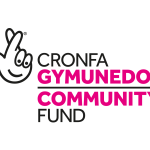The challenge
Glioblastoma (GBM) is one of the most deadly types of primary brain tumour – people diagnosed with this malignancy have an average life expectancy post- diagnosis of only 12-18 months (The Brain Tumour Charity, 2020). Approximately one-third of all primary brain tumours diagnosed in England are glioblastomas (Cancer Research UK, 2023). The Less Survivable Cancers Taskforce report ranked the UK as 25th out of 33 countries for 5-year survival from a brain tumour (Bawden, 2024). With no new approved therapies for glioblastoma since the introduction of temozolomide nearly 20 years ago, access to innovative treatments must be a priority for NHS England and National Institute for Health and Care Excellence (NICE).
An example of what we want/what is needed
Tumour Treating Fields (TTFields) therapy is an innovative, licensed treatment option for patients with newly diagnosed GBM receiving temozolomide. A recent meta-analysis has demonstrated that therapy with TTFields plus temozolomide can enhance survival rates compared with temozolomide alone in newly diagnosed patients (Ballo et al., 2023). However, TTFields therapy is currently unavailable to patients within the NHS and has not yet been appraised by NICE.
This situation contrasts with that of those living in countries like France, Austria, Germany, Sweden, Switzerland, Japan, Israel and the United States, where the treatment is accessible to eligible patients with GBM. We want NICE to appraise TTFields therapy and its clinical- and cost-effectiveness in England as quickly as possible and this assessment used to inform a decision on market access to potentially allow patients with such a devastating disease access to this licensed therapy.
You can read more about Tumour Treating Fields on the brainstrust website here
What we are doing together
So far we have written to NICE, with the support of the British Neuro Oncology Society (BNOS), to request that TTF technology is appraised appropriately using the right process and with up to date information. This approach has been well received and we are expecting to have an update in the coming weeks. Hopefully TTF technology will be more accessible to more people with Glioblastoma soon.
Working together makes a difference
Our mission is to ensure all patients with a brain tumour – including those with highly aggressive GBM – receive fair access to the latest innovative treatments. Brain Tumour Research, Brain Tumour Support, brainstrust, the International Brain Tumour Alliance, OurBrainBank, and The Brain Tumour Charity form a group of brain tumour charities and a non-profit organisation that are working together to ensure that patients with GBM have timely access to innovative treatments.
Further help
If you would like to stay updated or offer your support, you can reach out to any of the brain tumour patient organisations in this group through the following
websites:
OurBrainBank: https://www.ourbrainbank.org/
Brain Tumour Support: https://www.braintumoursupport.co.uk/
Brain Tumour Research: https://www.braintumourresearch.org
brainstrust: https://brainstrust.org.uk/
The Brain Tumour Charity: https://www.thebraintumourcharity.org
International Brain Tumour Alliance: https://theibta.org/
How we are doing this work
This work has been facilitated by MAP Patient access, who have issues this transparency statement:
MAP Patient Access, a UK market access consulting firm, is providing pro-bono support to organise and facilitate collaboration between brain tumour charities and a not-for-profit organisation. This effort aims to call for the fair assessment of new treatment options for patients. Please note that Novocure is a client of MAP, and some of the patient organisations that are signatories to this group have received sponsorship or other support from Novocure (details are available on request).
References:
The Brain Tumour Charity (2020). Glioblastoma Prognosis | Brain Tumour Survival Rates. [online] Thebraintumourcharity.org. Available at:
https://www.thebraintumourcharity.org/brain-tumour-diagnosis-treatment/types-of-brain-tumour-adult/glioblastoma/glioblastoma-prognosis/
Cancer Research UK (2023) Glioblastomas. Available at https://www.cancerresearchuk.org/about-cancer/brain-tumours/types/glioblastoma (last accessed: 09 July 2024).
Bawden, A. (2024). UK has some of worst cancer survival rates in developed world, report says. The Guardian. [online] 11 Jan. Available at:
https://www.theguardian.com/society/2024/jan/11/uk-cancer-survival-rates-developed- world-report.
Ballo et al. (2023) J Neurooncol. 164(1):1-9. doi: 10.1007/s11060-023-04348-w.202









